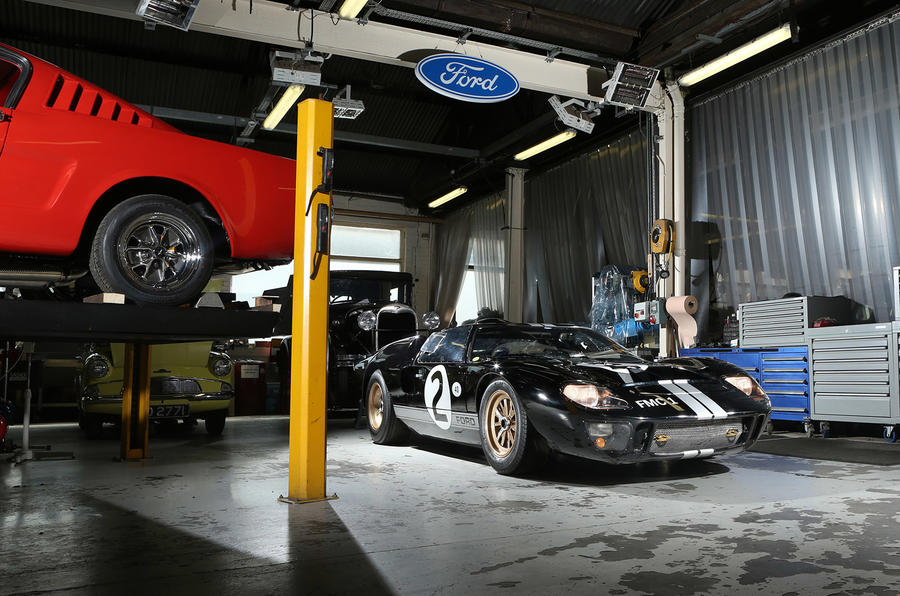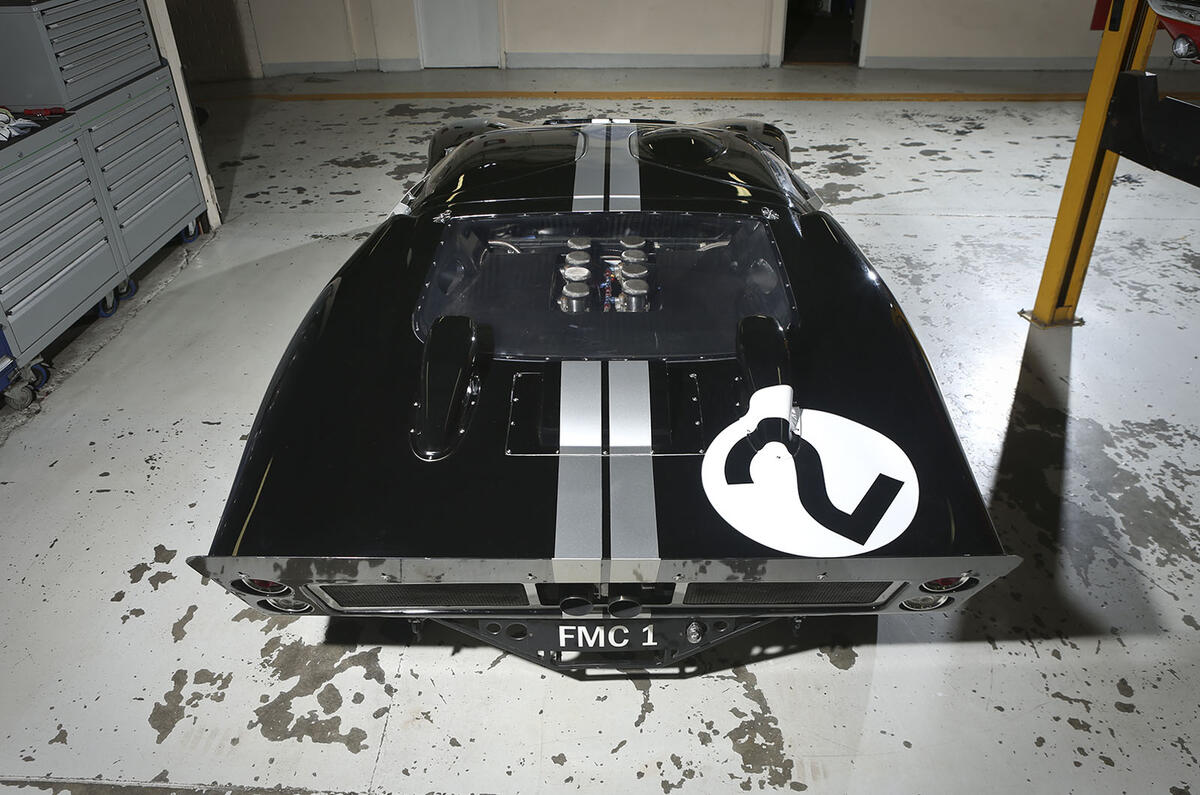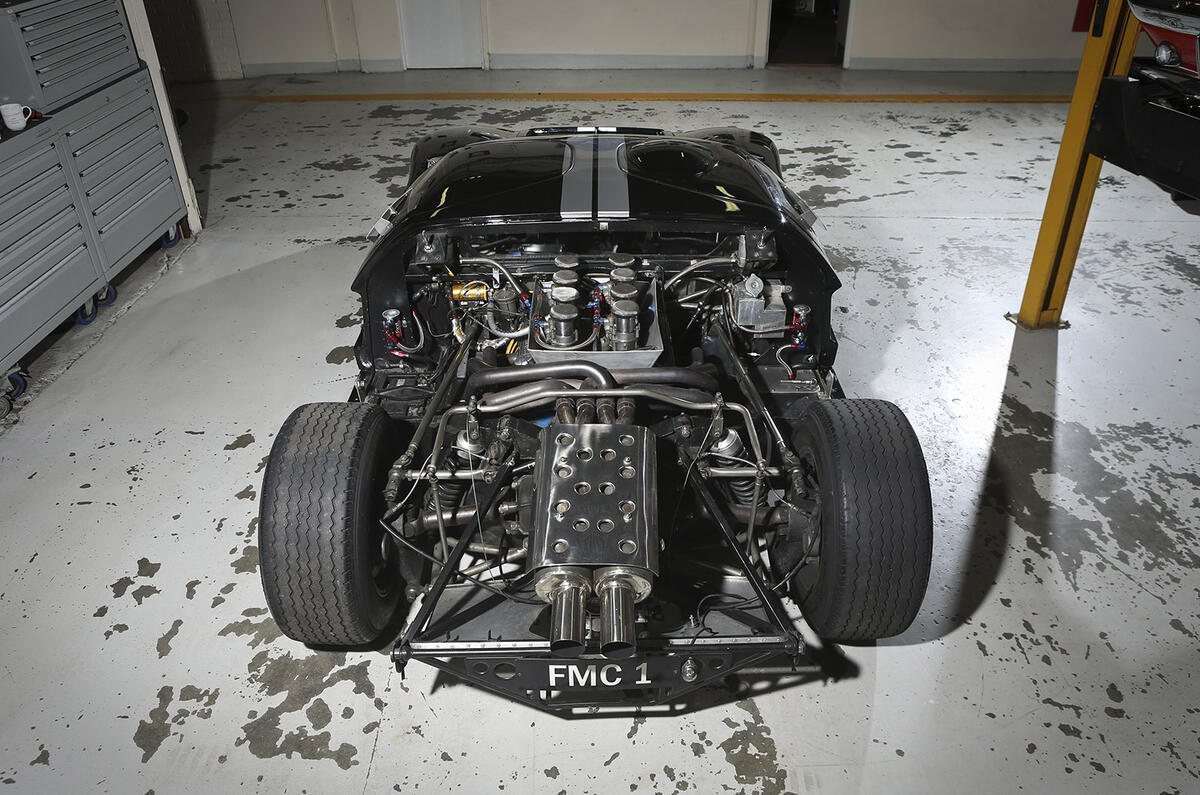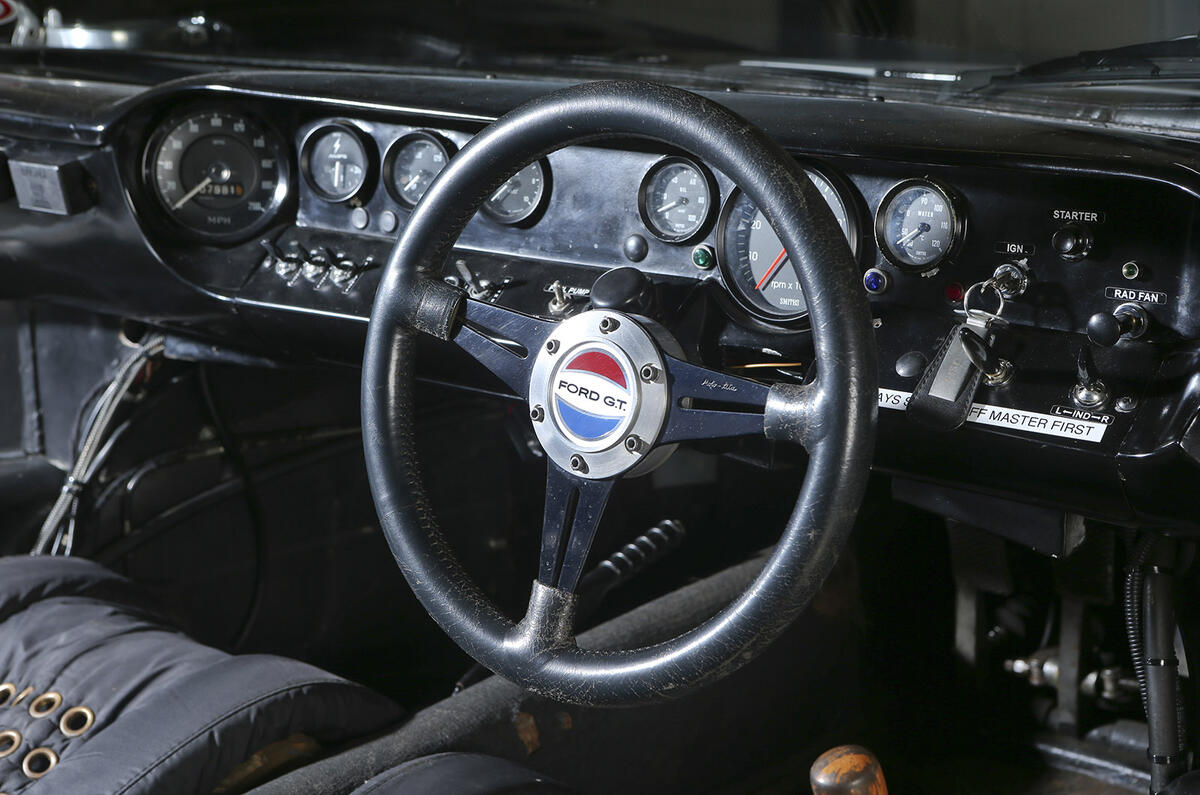An original Ford GT40, like any 50-year old racing car that represents its manufacturer in the public eye, requires an unstinting attention to detail to ensure any appearance doesn’t end prematurely with an embarrassing puddle underneath – or worse.
Happily for Ford, it has hugely experienced heritage workshop technicians Colin Gray and Ivan Bartholomeusz to tinker, cajole and cosset these superlative machines into peak condition. Somewhat less promisingly, they also have me today to generally obstruct, fumble and look clueless. I have already nearly fainted with excitement at the prospect of groping a GT40’s oily bits.
Read the full story on the new Ford GT from the Detroit motor show
And there’s no exhibit in Ford UK’s huge heritage fleet more prized than GT40 chassis number 1008, a Mk1 owned by Ford since new with the specific purpose of fulfilling the requests of salivating hacks everywhere.
That explains the Mk2 bodywork and colour scheme in deference to the car that won the Le Mans 24 Hours in 1966. As in previous years, chassis number 1008 will be a course car at the Goodwood Revival meeting this weekend, alongside it’s Mk3 road car sister.
If the patient would like to get undressed…
Like most dedicated racing cars, the GT40 exposes its guts quickly, an attribute vital in the heat of competition. A large bladed screwdriver is all that’s required for the four chunky screws on the front access hatch, ’though in truth you’d get away with a two-penny piece.
With the hatch removed – and not forgetting disconnecting the multi-pin plug for the headlamps either side – it’s two more screws and a bolt under each front wheelarch to remove the entire front clam. The rear clam (glassfibre, like the rest of the bodywork) pivots on a simple bracket at the very tail of the car, but the two steel wires that prevent it tipping over backwards obviously have to be removed first (one is sagging a bit – that’ll need attention). It’s a two-man job to lift it off, and a little bit heavier than I had expected. Sweaty palms ensue.
The doors are also removed. If you just so happened to have acquired a priceless Le Mans-winning Ford for your own garage, you’ll require a 5/16th socket on those…
What’s on the list chaps?
Colin and Ivan have a job checklist that stays with the car. That way they both know what the other has done to the vehicle, especially important given so many cars to look after, it’s not necessarily possible to work solidly on one car at a time.













































Join the debate
Add your comment
The problem is
I've been lucky enough to be in it when it was it's original Linden Green (before they painted it in Gulf Colours) and then changed it like now for the Festival of Speed.
I hear a rumour that they are going to paint the MkIII they own Red as per the original MkII advertising material
Envy........